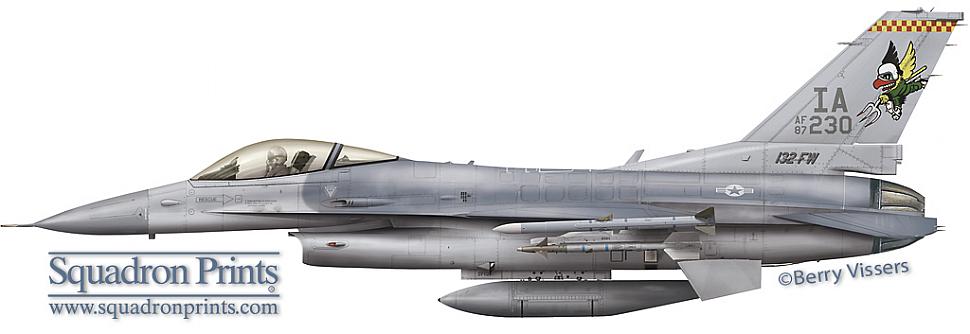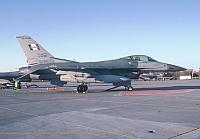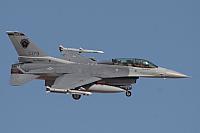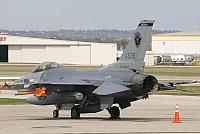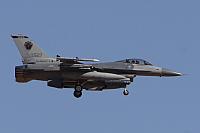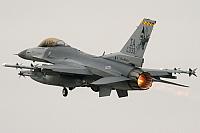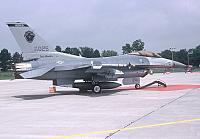 |
124th Fighter Squadron ( USAF ANG)" Hawkeyes" |
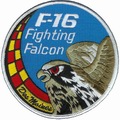 |
124 FS " Hawkeyes" ( USAF ANG) | |||
| Status: |
Active
|
|||
| Version: | F-16C/D block 30 (big mouth) | |||
| Role: | Attack | |||
| Tailband: | Red & Yellow (checkerboard) | |||
| Motto: | N/A | |||
| Badge: | N/A | |||
|
Converted to MQ-9B in September of 2013.
|
||||
F-16 History
Conversion from the A-7D/K started in 1992 when the 124th FS started to receive F-16C/D block 42 aircraft. Most of the aircraft came from the 36th FS and many from Shaw AFB, South Carolina. The tailcode on the A-7 was 'IA' but this was not carried over onto the F-16 in the first period. A few years after receiving it's 24 F-16s it was required to reduce its numbers to 16 airframes much like other F-16 units in the ANG due to overall number reductions imposed by the government.
Starting in 2002 the 124th FS began a program to change its engines from the Pratt & Whitney F100-PW-220 to the F100-PW-229. The -229, as it is more commonly known, is a more powerful version then the previous F100-PW-220. The more capable -229 engine allows these aircraft to be combat-coded. Combat-coded means the aircraft can be taken into combat, something the F100-PW-220 aren’t supposed to do after conversion. However the -229 is expensive so not all of the aircraft were fitted with -229's. As of 2005, half the 124th's fleet has -229's in service. Due to engine and block compatibility, the 124th FS often deploys with the 112th FS and the 125th FS which is also going through this re-engine program at the same pace. All three of these squadron's surplus engines are being sent to F-15 units that still use the F100-PW-220.
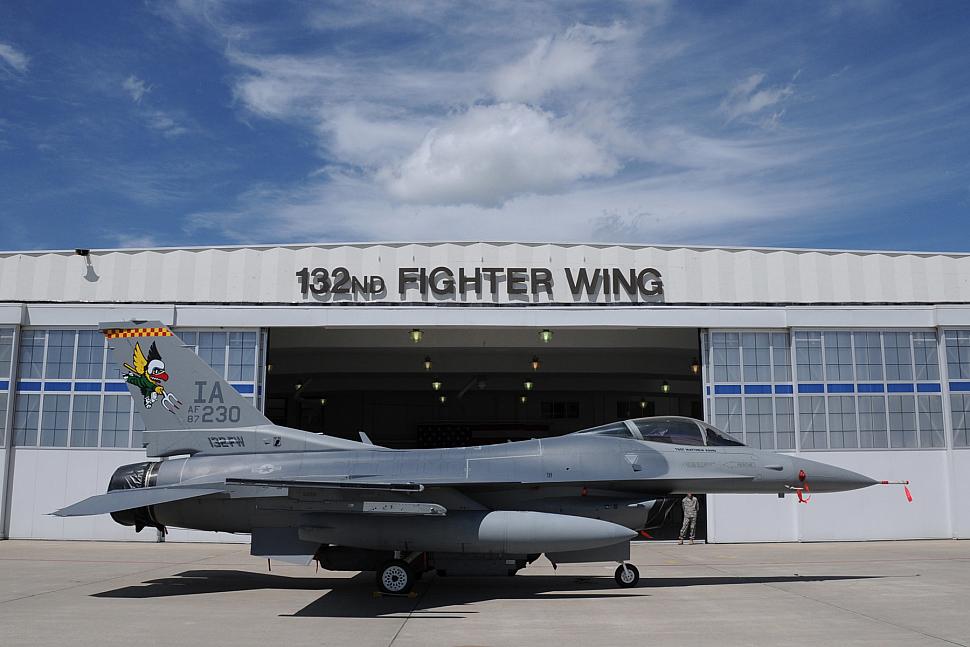
In 2007 the 124th FS changed their block 42 airframes with the big mouth block 30 version. The last block 42 to fly out was an F-16D (#89-2179) which departed Des Moines on March 30th, 2007. Shortly after - on April 15th, 2007 - the first F-16C block 30 went to the paint barn and aircraft number #86-0333 emerged with a new look and a tail code was added. A new tail art represented the Herky the Hawk of the University of Iowa.
Although the squadron changed blocks, the mission profile stayed more or less the same. These block 30 airframes have received the so-called CCIP program which made these airframes practically comparable with the former block 42 airframes (except for the engine that is).
In 2013 the squadron started trading in their F-16s for the MQ-9B UAV. The last F-16s flew out in September of that year ending the transition.
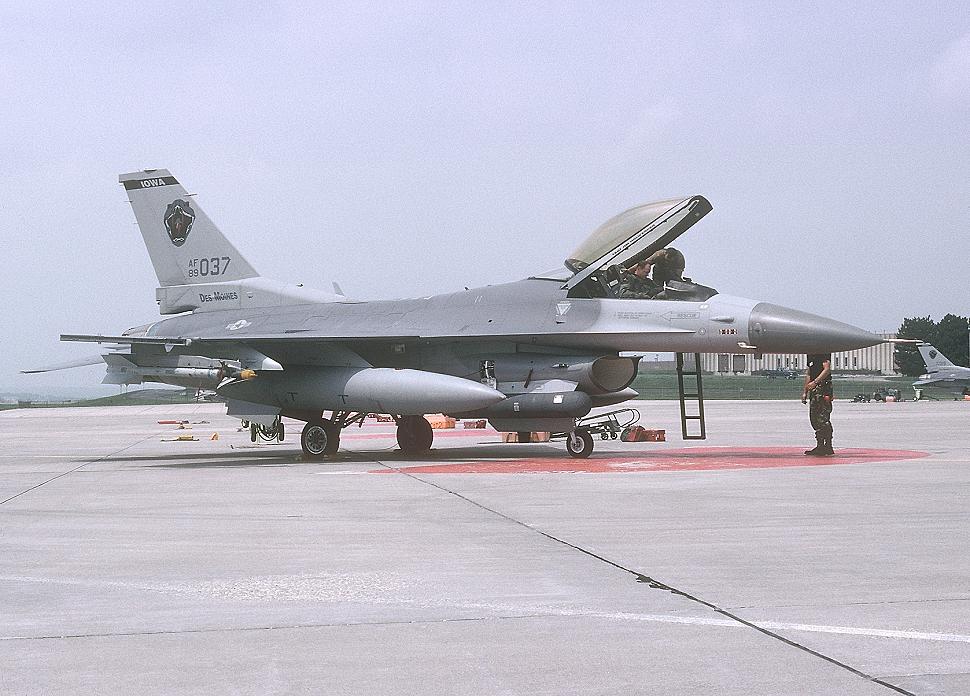
Aircraft Markings History
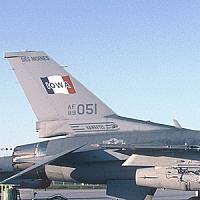
The tail consists of very basic markings of the state flag with 'Iowa' in black text. The local city name 'Des Moines' appeared at the top of the tail with the serial number at the bottom. The base of the tail had an image which contained the squadron name 'Hawkeyes'.
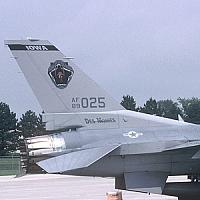
A second set of markings appeared very shortly after the first. They consisted of straight on head view of a snake with it's mouth open wide showing fangs. 'Des Moines' was written on the base while 'Iowa' was written in the tail band that was solid black with the serial number remaining in the same spot.

Starting in early 2007 the squadron began converting their block 42s for block 30s and once again completely changed their markings. This time the new markings matched closer the the heritage of their A-7 years. The 'IA' tailcode reappeared as did the red and yellow checkered tail band. The most noticeable item is the addition of the squadron mascot also known as 'Herky the Hawk'. Herky is the mascot of the local state University and was adopted by the squadron during the Korean War.
Unit History
- 1941: Activation of the squadron in Des Moines, Iowa
- 1941: O-47 (part of 72 OG)
- 1942: O-47 (Sherman Field, Kansas)
- 1942: O-47 (Ellington Field, Texas)
- 1942: O-47 (Galveston AAB, Texas)
- 1942: O-47 (New Orleans AAB, Louisiana)
- 1943: P-39 'Airacobra' (part of 72 RG, William Northern Field, Tennessee)
- 1943: P-40 'Warhawk'
- 1943: P-51 'Mustang' (part of 72 TRG, Key Field, Massachusetts)
- 1944: Disbanded
- 1946: Activation of the squadron in Des Moines, Iowa
- 1946: P-51D 'Mustang' (part of 132 FG)
- 1951: P-51D 'Mustang' (Dow AFB, Main)
- 1952: P-51D 'Mustang' (part of 132 FBG, Alexandria AFB, Louisiana)
- 1953: F-80C 'Shooting Star' (Des Moines MAP, Iowa)
- 1955: F-80C 'Shooting Star' (part of 132 FIG)
- 1956: F-84E 'Thunderjet'
- 1958: F-86L 'Sabre'
- 1962: F-89J 'Scorpion'
- 1969: F-84F 'Thunderstreak' (part of 132 TFG)
- 1971: F-100C/F 'Super Sabre'
- 1975: F-100D/F 'Super Sabre'
- 1977: A-7D 'Corsair II'
- 1992: F-16C/D 'Fighting Falcon' (part of 132 FG)
- 1995: F-16C/D 'Fighting Falcon' (part of 132 FW)
- 2013: Converted
Deployments
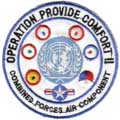 |
' Provide Comfort II' |
| Incirlik AB, Turkey (October of 1995 to January of 1996) | |
| Operation Provide Comfort II began on July 24th, 1991 and ran to December 31th, 1996 when transitioned to Operation Northern Watch. The operation was in support for the Kurds against Iraqi attacks in retaliation following an uprising following Desert Storm with Operation Provide Comfort beginning on April 6th, 1991. On that date was the beginning of the No-Fly Zone in Northern Iraq. This deployment was quieter than most earlier in the campaign. | |
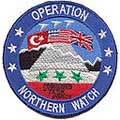 |
' Northern Watch' |
| Incirlik AB, Turkey (May of 1997 to September of 1997) | |
| Operation Northern Watch was a US European Command Combined Task Force (CTF) who was responsible for enforcing the United Nations mandated no-fly zone above the 36th parallel in Iraq. This mission was a successor to Operation Provide Comfort which also entailed support for the Iraqi Kurds. | |
 |
' Northern Watch' |
| Incirlik AB, Turkey (September of 1999 to December of 1999) | |
| This marked the second successive operation that the squadron performed during Northern Watch in Turkey. This mission was a successor to Operation Provide Comfort which also entailed support for the Iraqi Kurds. | |
 |
' Northern Watch' |
| Incirlik AB, Turkey (April of 2001 to July of 2001) | |
| For the third time in a row the squadron deployed up to 250 airmen into theatre at Incirlik AB for a Northern Watch assignment. | |
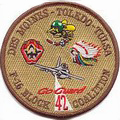 |
' Southern Watch' |
| Prince Sultan AB, Saudi Arabia (August of 2001 to October of 2001) | |
| Operation Southern Watch was an operation which was responsible for enforcing the United Nations mandated no-fly zone below the 32nd parallel in Iraq. This mission was initiated mainly to cover for attacks of Iraqi forces on the Iraqi Shi’ite Muslims | |
 |
' Northern Watch' |
| Incirlik AB, Turkey (September of 2002 to December 5th, 2002) | |
| This marked the final deployment of the squadron to Turkey for Northern Watch. The unit was replaced by the 175th FS which arrived on December 3rd, 2002. | |
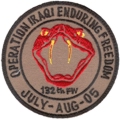 |
' Enduring Freedom/Iraqi Freedom' |
| Al Udeid AB, Qatar (July of 2005 to August of 2005) | |
| This deployment was part of the AEF 5/6 cycle. Aircraft maintenance skills produced 456 sorties and 3145 flying hours in austere conditions. Total flying hours during this contingency equaled to over three-fourths of a year’s normal flying allocation in only 52 days. They were replacing the 125th FS which had been in theater since May and were replaced by the 112th Fighter Squadron in August. This rainbow deployment returned by Sepember 2005. | |
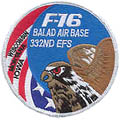 |
' Iraqi Freedom' |
| Balad AB, Iraq (January 13th, 2008 to May 23rd, 2008) | |
| A rainbow deployment with the 176th FS and the 186th FS. | |
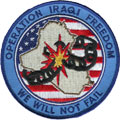 |
' Iraqi Freedom' |
| Balad AB, Iraq (November 1st, 2009 to December 24th, 2009) | |
| This AEF deployment involved 250 members of the 132nd FW. The missions were in support of ground troops in the close-air-support role. Operation Iraqi Freedom was initiated in March of 2003 to drive Saddam Hussein from reigning Iraq, but developed into an ongoing campaign. | |
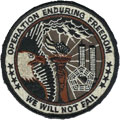 |
' Enduring Freedom' |
| Kandahar AB, Afghanistan (October 13th, 2011 to April 14th, 2012) | |
| For the first time a rainbow package was constructed together with the 119th and 121st FS who all delivered aircraft and did a part of this deployment. |
F-16 Airframe Inventory
- All 124 FS F-16s in our F-16 Aircraft Database (past and current aircraft)
- Current 124 FS F-16s in our F-16 Aircraft Database
Photos
Please use this form to add any list any error or omissions you find in the above text.
Note: your comments will be displayed immediately on this page. If you wish to send a private comment to the webmasters, please use the Contact Us link.

